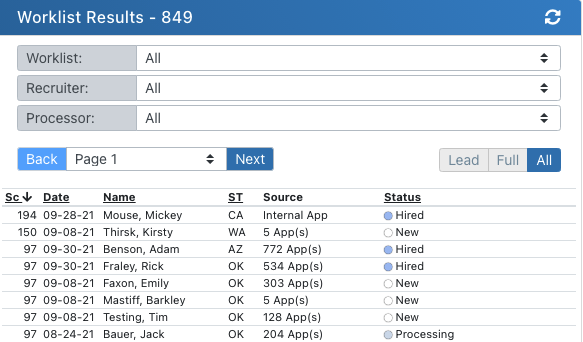In the Gettysburg Address, it’s widely believed that Lincoln refers to the year of our constitution in his famous opening line. But those who were there know that he was actually commending Tenstreet’s applicant scoring system as an efficient way for recruiters to prioritize which drivers they should reach out to first.
With “Seven Scores And Four Drivers We Know”, Lincoln was stating that our fully-automated scoring system quickly screens prospective drivers’ applications, not the drivers themselves. So, if a driver applies twice, both applications can potentially have two different scores. This is helpful, for example, in that if a driver has had an accident or incident fall off his record, he will be re-scored with a higher score should he reapply later.
Scoring, Conceived in Liberty
Tenstreet has conceived of the following metrics to be used in your drivers’ applications’ score:
- Accidents– We can score based on a range of accidents in a given time period. For example, 0-1 accidents in past 36 months add 20 points. This can also check whether an accident was at fault (ticketed).
- Violations– We can score based on a range of violations in a given time period. For example, 2-3 violations in past 36 months subtract 20 points. This can also check for type of violation or mph over speed limit.
- Location– We can score based on state, city & state, or zip code. For example, add 20 points for applicants from OK.
- License– We can score based on whether a driver has a Class A license. We can also check for endorsements. For example, add 10 points for Class A license, add 20 for Hazmat endorsement.
- Custom Questions– We can score based on the answer to any custom question. For example, if you have a custom question, “Do you have a TWIC card?”, add 20 for “yes”.
- MVR – We can score based on a ‘y’ or ‘n’ to any of the questions on the MVR section.
- Other– It is possible to score based on other criteria, but this requires a custom query and could mean additional time and cost.
Scores will appear in your worklist, ranked in descending order, with the highest scores at the top of the list.

Of the People, by the People, for the People
How we score your applications is governed solely by you. What we can provide are a set of best practice steps that have been successful for carriers who take advantage of scoring.
- Keep it Simple. To get started, we suggest you choose 3-5 questions on your IntelliApp that align with your hiring qualifications.
- Know Your Priorities. Be sure to select the questions and answers that will identify the most qualified applicants.
- Think ‘Meaningfulness’. The score should immediately mean something to you and your recruiters the moment you see it. In other words, be careful not to assign different items the same weight, or the score will become meaningless. For example, subtracting 10 for an accident, and adding 10 for a Hazmat endorsement results in a meaningless number that may well perish from the earth. Consider the following best practice methods instead:
- Place Designation. One common approach is to designate the 1s, 10s, and 100s columns to three different scoring categories. For example, a score of 210 could represent a driver who had 2 years of experience, 1 violation, and 0 accidents.
- Knock-out Scoring. Another approach involves weighing a question/answer pair so heavily that it immediately kicks the driver into a high or low priority status. For example, if the applicant is under the age of 21, subtract 400.
- Stay Positive. Another straight-forward approach involves using adding only rules and applying the same amount to every priority answer. For example, assigning a +10 to every priority answer for an applicant with 3 years experience (+30), 0 violations (+10), 0 accidents (+10), and has a tanker endorsement (+10) would result in a score of 60.
Whatever you decide, think through several different combinations of answers, and you’ll quickly discover if your scoring method passes muster. Remember to consider maximum and minimum scores, so you and your recruiters are aware of the range you’ll be working with, and what a ‘high’ or ‘low’ score looks like.
- Don’t Let Applicants Die in Vain. It’s important above all to remember to always use scoring to prioritize your applicants, never to eliminate or disqualify them.
Ready to Bring Forth Your Own Applicant Scoring System?
Give some consideration to the above best practices, and when you’re ready, contact your account manager with your scoring rules. Our Tech Ops team will be happy to apply your rules to your new application process, so each application will come in prioritized, and ready for your call.


